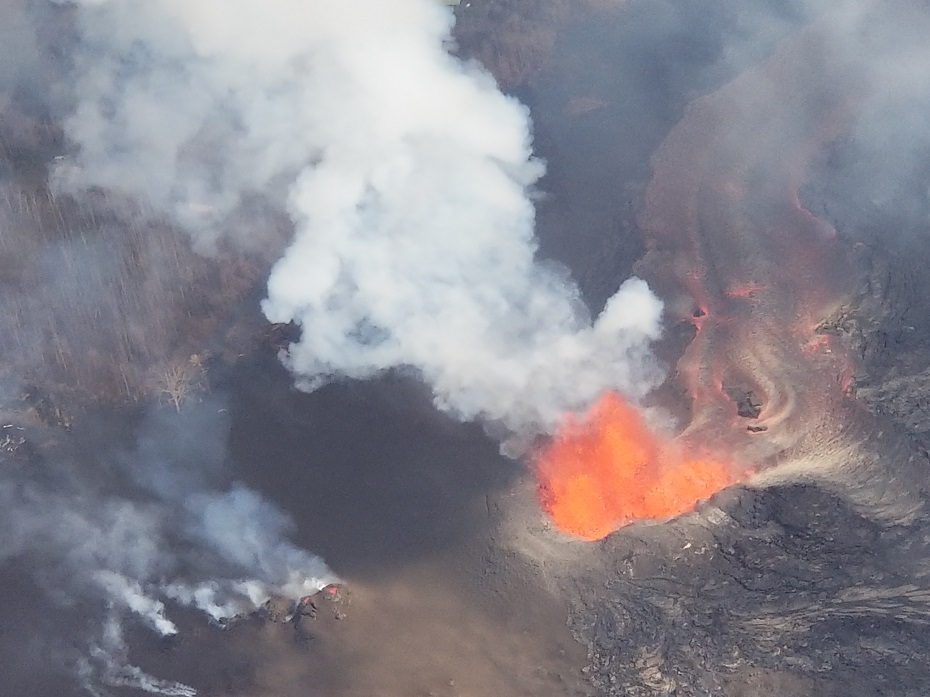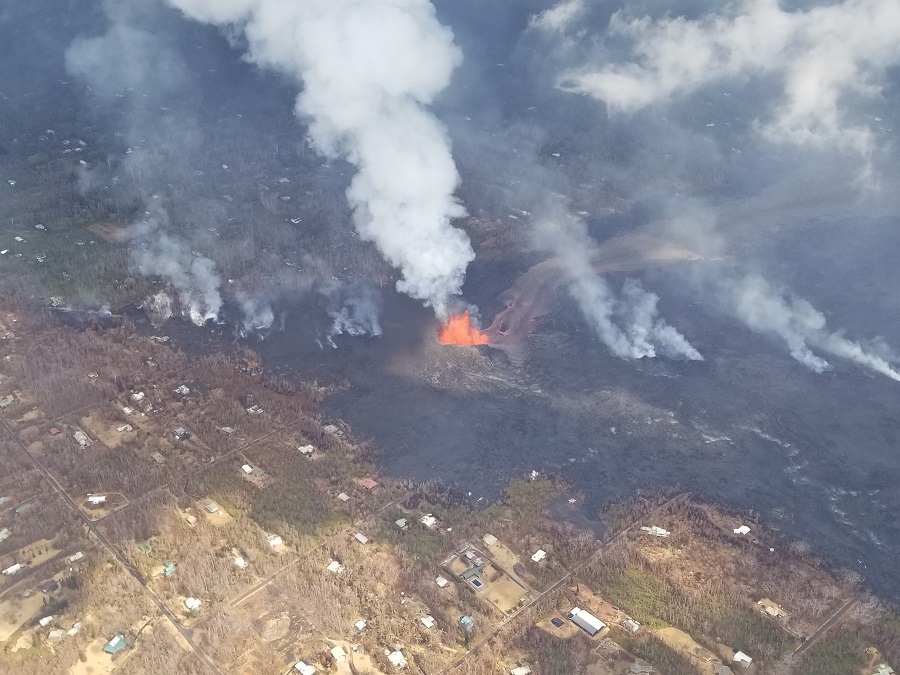
The Kilauea volcanic eruption is creating a slew of problems on Hawaii’s Big Island and the latest is rather frightening: the threat of flash floods of lava. Very hot lava is pouring from vents along the fissure line, shooting lava high into the air. Lava is also pouring down the slopes of the island through channelized flows. If conditions are just right, the hot lava becomes pooled in a perched lava pond.

Perched lava ponds form during some basaltic eruptions. Hawaii is no stranger to the phenomena; two such ponds, each approximately 450 feet in diameter, formed during the 1968 eruption at Napau Crater and the 1974 eruption of Mauna Ulu. According to NASA, each one formed where a channelized, high volume lava flow encountered a sharp reduction of slope: the flow spread out radially and stalled, “forming a well-defined terminal levee enclosing a nearly circular lava pond.” Sometimes, when one of those levees is compromised or breached, the contents of the entire pond of hot lava is released down in the direction of the wall failure. Such flows can move extremely fast and have extreme volume.
Perched ponds and stalled flows could break and surge at anytime. For this reason, the USGS Hawaiian Volcano Observatory and the Hawaii County Civil Defense warn people to stay away from lava in any form. Slow moving flows may hide additional dangers of upstream flash flood lava events. Lava could quickly flash flood areas, quickly covering an area in deep, incredibly hot molten rock.